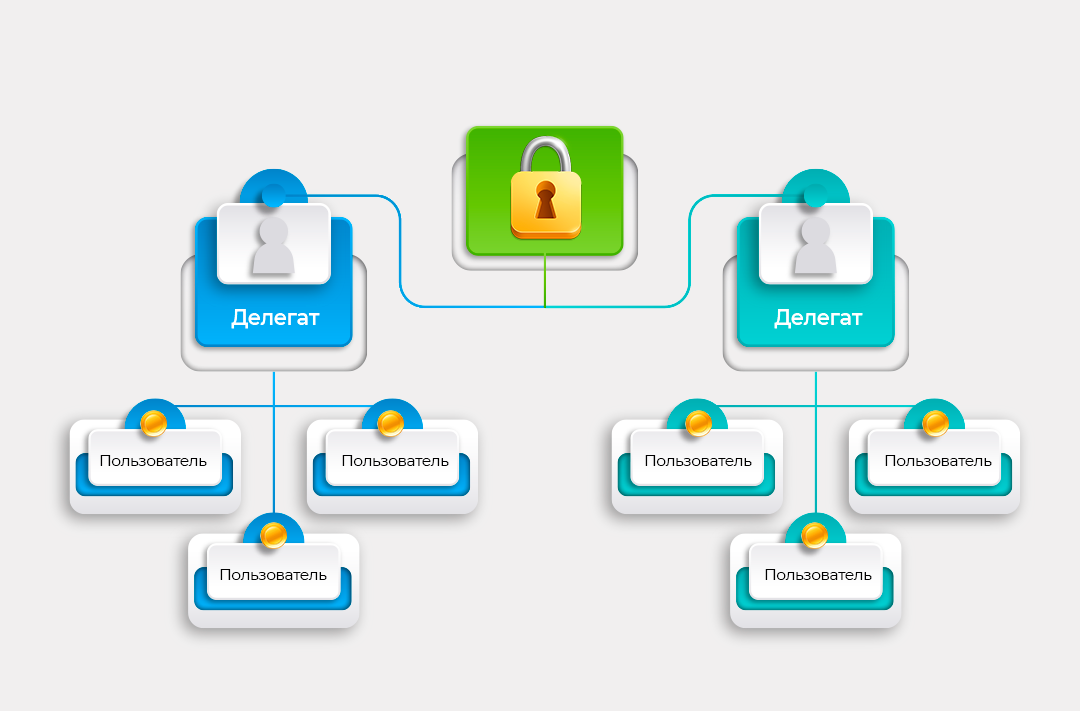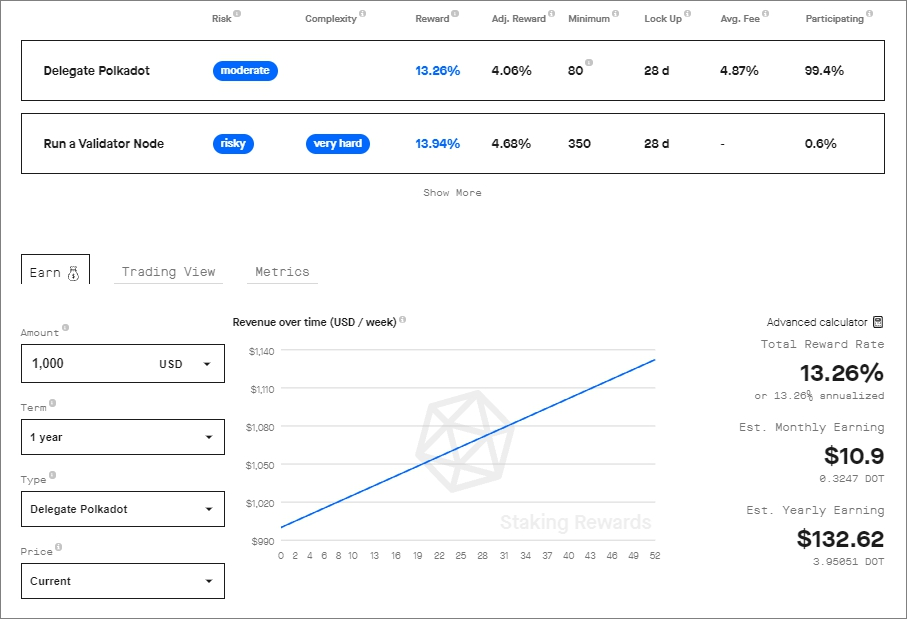What is staking and how to earn money on it
Mining equipment is becoming more and more expensive, and many users have turned their attention to a new way of mining cryptocurrency - staking

10.10.2021
3733
9 min
1
This process does not require significant computing power. You don't need expensive video cards, just a computer, the Internet, and coins in your account. Let's find out why stacking is more affordable than mining and why the community is willing to pay for storing coins in a wallet.
What is staking?
Stacking is the locking of coins in a PoS blockchain for a specific period of time. The network uses these coins to reach consensus and maintain work. The owner of a specified number of coins becomes a validator who checks and records transactions. The platform pays them a reward for this. The validator's computer must always be online, and the wallet must be synchronized with the blockchain.
PoW and PoS blockchains
The first blockchains were developed on the Proof-of-Work (PoW) algorithm. Bitcoin and other first-generation blockchains use this algorithm. The reward goes to the computer that first solves the mathematical problem, and the process of finding a solution and creating a new block is called mining.
Modern blockchains use a variation of the PoS (Proof-of-Stake) algorithm. Most often it is delegated proof-of-stake (DPoS). In this case, the number of validators is limited, and coin owners vote on who generates the next block. The validator receives part of the reward, the remaining part of the amount is distributed among the owners of the coins in proportion to their share.

Another option is a staking pool. Coin owners join the pool and delegate the management of their blockchain-locked coins to it, while new blocks are generated by a masternode, a special server. This is the case when the blockchain's terms prescribe strict computer and stake size requirements. Participants divide the remuneration in proportion to the share, the pool provider receives a commission. There is no minimum share limit: you can invest any number of coins and withdraw them at any time because the total stake meets the requirements of the blockchain.
When the coin is inexpensive, and the network does not have strict system requirements, users can run their own node. This way you can avoid commissions, but you have to follow the rules of the blockchain for validators: buy the required number of coins and lock them in the wallet for a certain period of time.
How does the reward depend on network inflation?
To keep the exchange rate from falling, some of the coins paid in transaction verification fees are taken out of circulation. The burning of coins is reflected in the blocks as another transaction.
At the same time, the profitability of the cryptocurrency decreases as the volume of coins frozen in steaks increases. At the time of writing, Ethereum validators are earning 5,35% per annum, a rate of 21,6% at the start.
Some networks prescribe the inflation rate in the code and link the amount of remuneration to it. For example, for Stellar, this indicator is 1% per year, and for confirming each transaction, the validator receives 1% of its share.
How much money should be blocked and for how long?
Each blockchain has its own rules. For example, ETH will be blocked until Ethereum 2.0 is fully rolled out, that is, until about 2022. In the table, we have compiled the terms of staking for 5 popular cryptocurrencies.
| Cryptocurrency | Minimum stake | In dollar equivalent | For how long |
| Ethereum (ETH) | 32 | ~94 000 | Before update 2.0 |
| Polkadot (DOT) | 10 000 | ~282 000 | 30-90 days |
| Cardano (ADA) | 1 (pool only) | ~2 | 0 days |
| Avalanche (AVAX) |
от 2 000 25 (if delegate) |
~136 000 ~1 700 |
2 weeks to a year |
| Algorand (ALGO) | 1 | ~1,76 | 0 days |
How is staking different from mining?
Staking was designed as an eco-friendly alternative to mining. This system also helps projects avoid a sharp drop in the exchange rate during a panic sale of assets: after all, to generate income, coins need to be kept in a wallet.
- Affordability. Staking does not require powerful equipment, and coins from a successful project can be sold for more than they were bought.
- A more stable rate. Staking terms force users to keep assets in the account, so there is less risk of increasing rate drawdowns when investors succumb to the general panic and sell more and more coins.
- Environmental friendliness. Staking does not require the same amount of electricity as mining. This reduces the carbon footprint of the PoS-blockchain, and with completely “green” energy reduces it to zero.
Staking pool
Some blockchains are initially designed for staking in a pool, for example, Cardano. The pool lowers the entry threshold for regular users: you can block fewer coins than is required to become a validator. You can delegate staking to a validator. In addition, the pool helps to participate in coin staking in blockchains with strict requirements for masternode power. At the same time, a pool participant may not comply with the asset lock period and withdraw money at any time.
Pool participants may not focus on the technical part of launching a node and keeping it running. They decide how many coins to block and for how long. The pool providers charge a commission for this.
How to choose coins for staking?
High profitability means a lot of risks. For example, the creators of pyramid coins can attract investors with a profit of up to 30% per month. When choosing a coin, follow three rules.
- Compare the number of coins that are in circulation to the volume of coins locked up in staking. If most of the coins are frozen, perhaps this cryptocurrency was created just for staking. It is not certain that in the future it will be as popular as it is now.
- Estimate the trading volume. If the coin is not traded enough on the stock exchange, it may be difficult to sell it, and a high percentage of the return from staking will be useless.
- Find out the current exchange rate of popular coins and analyze the profitability indicators of staking on stakingrewards.com. The main page presents a summary table, which contains indicators for the 10 most popular cryptocurrencies and detailed information about each. Here you can find out the volume of blocked coins in dollars and the percentage of the issue volume, daily and weekly price fluctuations. There is also a forecast of profitability from the staking of these coins.

Staking on the exchange
In order not to make a mistake with the choice of a coin for staking, you can entrust the staking to the exchange. This service is called Staking-as-a-Service (SaaS). The user does not need special knowledge and skills to start a node. The process is set up by professionals, so the risk of asset loss due to technical errors is minimized.
Such an approach helps to avoid risks associated with launching a node on your own. You can reach income faster than with independent staking. At the same time, users may not comply with the rules that the network sets for validators. For example, on Binance, coins can stay in a wallet for just one day, after which they can be sold.
| Exchange | Binance | Bitfinex |
| Payments | Monthly | Weekly |
| Minimum deposit | No | No |
| Commission | No | No |
| Coin freezing | For a day* | No* |
*The ETH freeze is conditional on the launch of Ethereum 2.0 and does not depend on the exchange.
Risks
Like any investment, staking does not guarantee a return. Exchange services make the process more predictable, but the risk still remains.
Possible negative scenarios when staking:
- Wrong coin selection. It can be a pyramid coin with high profitability and low trading volume. There will be profit in cryptocurrency, but it will not be possible to convert it to fiat money or exchange it for other coins.
- Rate drops. Sometimes collapses in exchange rates happen because of negative news. Cryptocurrency is a very volatile asset, the value of coins goes both up and down.
- Wrong choice of the exchange. Not all exchanges offer transparent terms. The lack of clear information about the terms of trading and staking can mean, at least, hidden commissions.
- Incorrect choice of pool. The site usually indicates the continuous operation time of the node (uptime). Uptime is important because the validator must always be online. A fundamental point: the participant does not transfer funds to the wallet of the pool, but only delegates management. If they ask you to transfer, they are scammers.
Conclusion
Mining is gradually giving way to staking: most of the new projects run on PoS algorithms. These blockchains do not need powerful expensive equipment, which quickly becomes obsolete both morally and physically. In successful projects, coins become more expensive over time: it is much easier to sell them than used video cards and ASIC miners.
The eco-friendliness of the new system is also important: staking does not require significant power consumption, which means that the carbon footprint of transactions is reduced as well.
Useful material?
Basics
Why Satoshi Nakamoto’s technical manifesto for a decentralized money system matters
Oct 31, 2022
Basics
Experts evaluated the development prospects of the new ecosystem and the investment attractiveness of its token
Oct 20, 2022
Basics
How to track fluctuations correctly and create an effective income strategy
Sep 13, 2022
Basics
Review of the most profitable offers from proven trading platforms
Aug 29, 2022
Basics
The Ethereum Foundation team has published a breakdown of major misconceptions about the upcoming network upgrade
Aug 18, 2022
Basics
What benefits the exchange offers, and what else is in the near future
Aug 4, 2022









 Telegram
Telegram  Twitter
Twitter